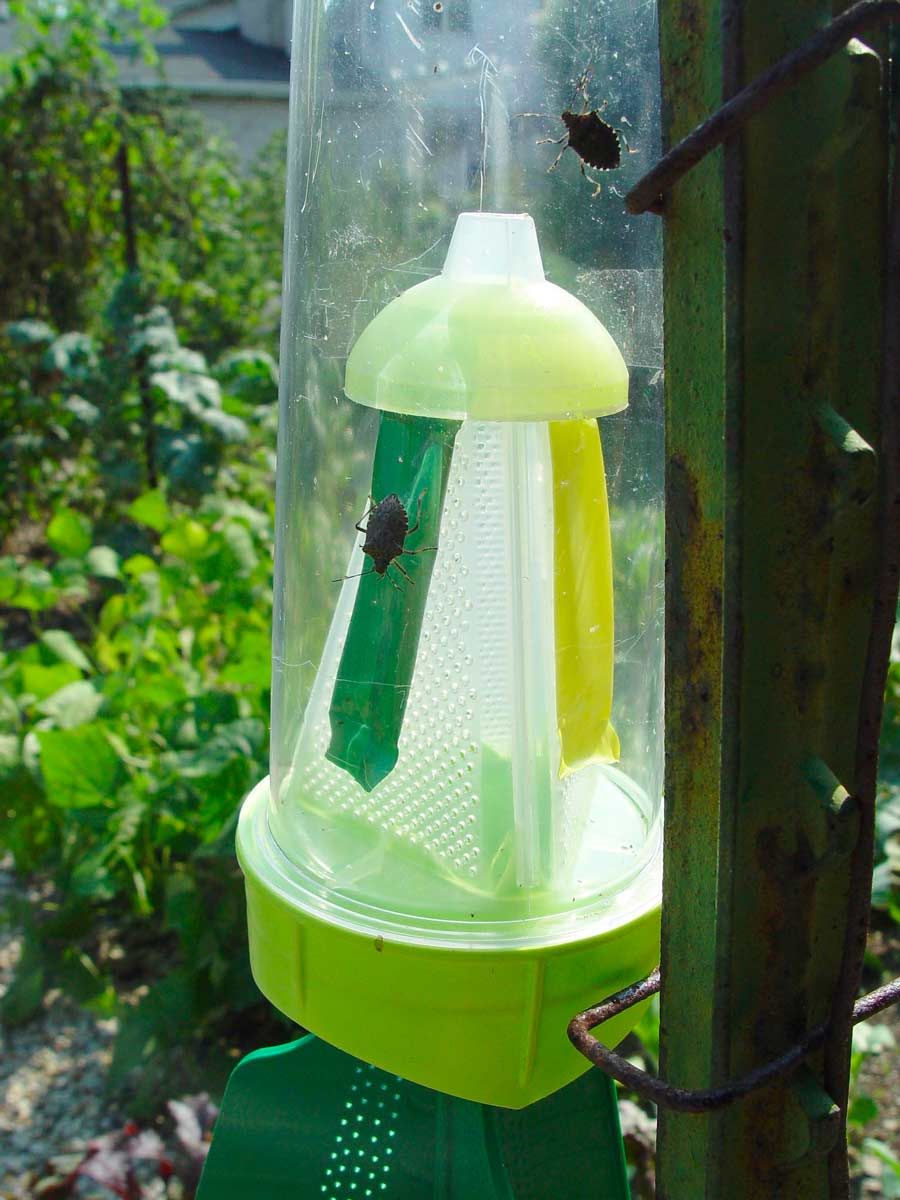
Traps for the control of harmful insects
Entomological traps are devices capable of attracting and capturing adult insects and represent a valid alternative to the classic pesticide treatments..
According to the attractions are distinguished::
• chromotropic traps, which exploit the insects' perceptive abilities towards colours;
• phototropic traps, which exert an attractive action through a light source;
• pheromone traps, in which volatile chemicals (sex pheromones) are installed, which represent the most reliable system and have had a very wide diffusion.
As for the latter, the capture takes place with a barrier that prevents the removal of the insect or, more frequently, with the use of substances that retain or kill it.
These traps are for free sale, as pheromones for monitoring are not subject to registration by the Ministry of Health. The instructions for monitoring and correct use are detailed in the packages (when to place them, how often to replace the dispenser, when to check them, etc.).
Traps are used in different contexts that can be traced back to two fundamental purposes: monitoring and mass capture.
The monitoring technique provides information on the presence of the species in the plot and the progress of flights. It is not a method of direct control, but is very useful to identify the appropriate time to intervene (even with organic products such as Bacillus thuringiensis effective against lepidopteran larvae). In correspondence of the flight peaks, in fact, the greater frequency of the reproductive events occurs and, consequently, the increase of the infestations at a distance of a certain time interval. Monitoring is usually carried out by recording catches on a weekly basis and intervening when the number of catches reaches a critical value, the intervention threshold.
The aim of mass trapping is to eliminate a large number of males in order to reduce the probability of fertilization. Unlike the previous one, this technique of employment of the sexual pheromones is a real method of struggle, useful for example in the control of the rodilegno (Cossus cossus and Zeuzera pyrina) and of the processionaria of the pine.
Agraria Checchi has a wide range of pheromone traps for monitoring and catching:
• Processionary of the Pine
• Pyralide of boxwood
• Red palm weevil
• Asian bug
• Moscow of olives
• Eastern moth
• Moth of the vine
• Yellow wood and red wood
For more information on these types of traps and how to use Contact us.



